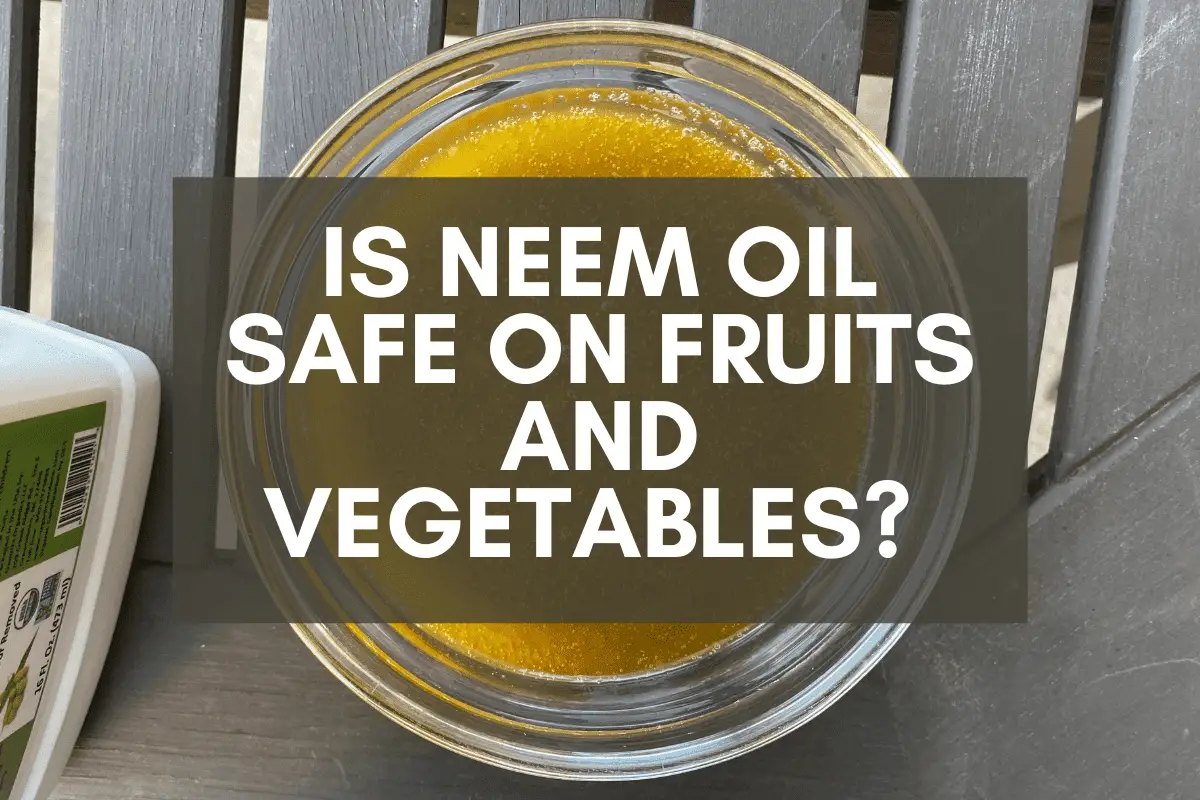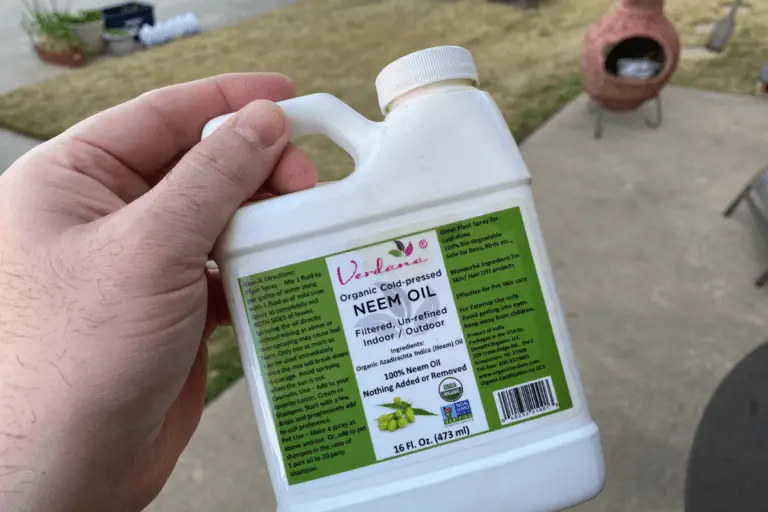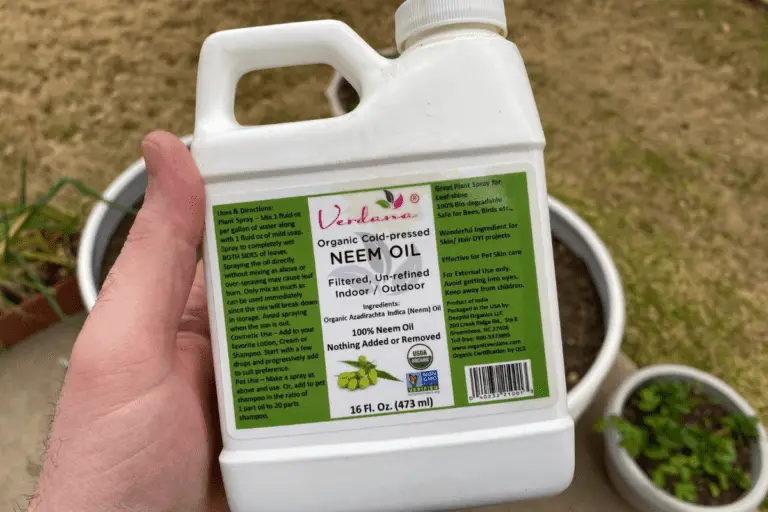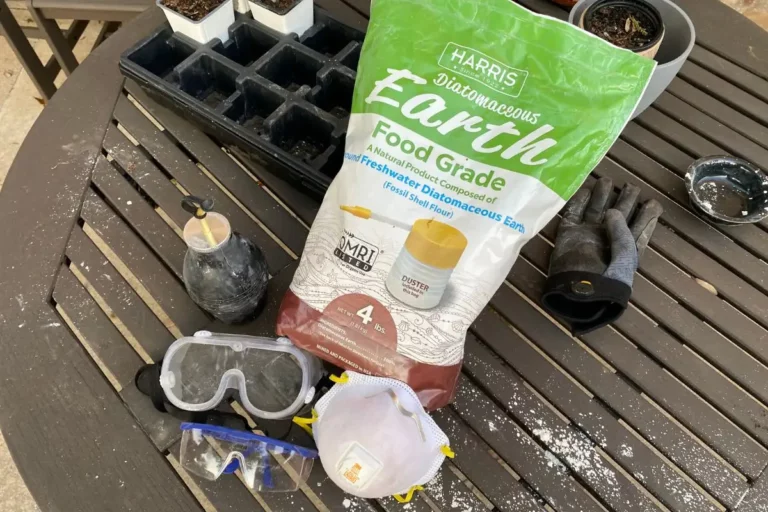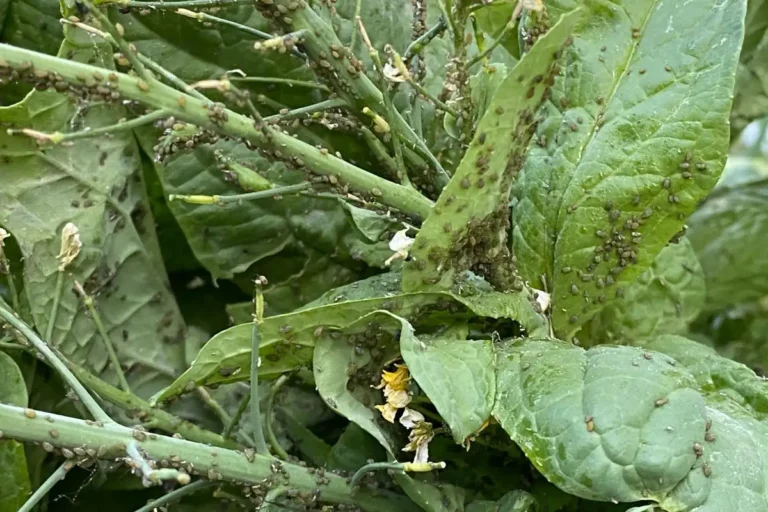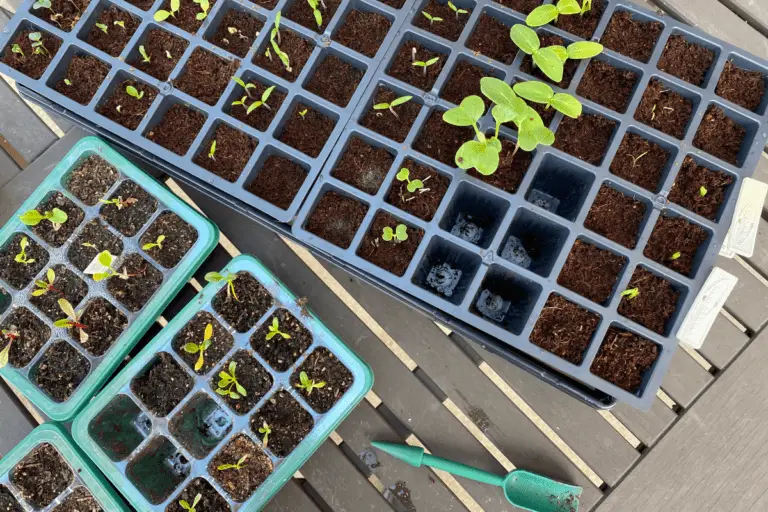Is Neem Oil Safe on Fruits and Vegetables? Food for Thought
I’ve been using neem oil for years, but when I was first introduced to it, I wasn’t sure how it compared to other store-bought insecticides:
Was it safe to use in my garden? Could I spray it on fruits and vegetables?
Derived from neem trees (Azadirachta indica), neem oil is a natural, organic product that’s safe to use on both fruits and vegetables. If applied properly, it protects plants against garden pests, but it breaks down quickly and washes off easily, making it a safe alternative to chemical sprays.
When it comes to edible plants, I’m very careful with insecticidal sprays. I prefer to practice natural, organic gardening, and I generally avoid products that tell me I have to wait a certain number of days before it’s safe to harvest and eat my fruits or veggies.
So let’s take a quick look at how neem oil compares to other insecticidal products and discuss what you have to do to ensure that your fruits and veggies are chemical-free before you pick and eat them.
Spraying Insecticides on Edible Plants: A Step-by-Step Guide
Before we take a closer look at neem oil in particular, I’d like to take a moment to go through my step-by-step approach to selecting insecticides and ensuring safe harests.
1. Promote Plant Health
As research has shown, healthy plants are less susceptible to bug infestations than unhealthy ones.
The reason for this is simple: In the ongoing battle between plants and pests, plants have developed internal self-defense mechanisms that aid in warding off destructive bugs. Unfortunately, when plants are weak or diseased, those internal systems don’t work as well as they do in healthy plants, which makes unhealthy plants a prime target for infestations.
If you build up healthy soil, water regularly, and give your plants the nutrients they need when they need them, you’re laying a strong foundation against both bugs and disease.
2. Choose Organic
Of course, life is never picture perfect, and your garden plants won’t be either. So let’s face it: You’re bound to see pests in your garden.
Your first impulse might be to reach for a bottle of Sevin or other popular chemical treatments, and I get that. Those chemicals are usually pretty powerful and often kill insects on contact.
But I’d encourage you to sacrifice some of that chemical power in order to use more natural products that are better for your garden and your family. This is one reason why I love neem oil. It’s powerful enough to kill a host of soft-bodied bugs–especially spider mites and aphids–yet organic and safe to use on both indoor and outdoor plants.
3. Check the Label
Whatever product you choose, you’ve got to check the label and follow the instructions exactly as written.
Whether it’s Sevin or Ziram or any other chemical insecticide or fungicide, you’ll see a fold-out label on the side of each bottle. Generally speaking, the stronger the chemical, the more pages the fold-out label will have since the manufacturer is required by law to provide all kinds of information related to the product’s proper use, application, and storage.
Personally, I hate these labels. They’re confusing and difficult to read, and once the sticky tape wears off that holds it in place, the label’s even more of a nuisance.
Before you mix and apply any product, read the label from front to back. I recommend highlighting the important information–or using a sharpie to write key facts on the container itself–so that you can find such info easily in the future.
4. Look for PHI
When you’re reading the label, pay particular attention to any references to what’s called the “pre-harvest interval” or “PHI” for short.
The PHI is a number that denotes the minimum number of days that must elapse between application and harvest.
In other words, if you use a product with a PHI of 3, you should wait at least 3 days from the time of application before harvesting or eating any fruits or vegetables. If it says 7, you must wait at least 7 days. And sometimes the product will have different PHI numbers for different plants. You’ll want to pay particular attention in that case to ensure you’re not harvesting anything early.
But remember: This is the minimum number of days you should wait. If you’re using a product with PHI recommendations, I’d encourage you to wait the minimum amount of time, then wait an additional day or two afterward. As far as I’m concerned, I’d rather err on the side of safety even if it means delaying a harvest for a few additional days.
5. Contact the Manufacturer
Every once in a while, you might notice that a particular type of garden plant is not listed on the product label and thus doesn’t have a PHI recommendation.
If you want to apply a product in your garden but can’t find information related to a particular plant, I recommend contacting the manufacturer directly.
Of course, you can turn to Master Gardener Google for more information, but I’d hesitate before placing my health and the health of my family in the hands of an algorithm, no matter how smart it might be.
6. Harvest Beforehand
One of the easiest ways to ensure that you’re eating good, healthy produce is to harvest as much as possible before you apply any insecticides to your plants.
Here’s what I do: Minutes before I apply anything in my garden, I grab a bowl and do a quick walk-through of all my plants.
If I see anything that’s ready to be harvested—or anything that can be harvested early without a problem (such as nearly ripe tomatoes and peppers)— I’ll harvest them on the spot so that I won’t have to do so again for several days.
7. Mix Properly
This almost goes without saying, but if you’re intending to apply anything to edible plants–especially any kind of insecticide–you must make sure that you follow the directions on the packaging.
If you’re making your own homemade insecticidal spray–using neem oil, soapy water, Garrett juice, or any ingredients I discuss in this article on natural homemade insecticides–you have some flexibility to experiment.
I’ve written several articles about my experiences battling spider mites–focused on what spider mites look like, where they come from, how they spread, and whether plants can recover from them or not–because I began experimenting with neem oil and soapy water spray during a period when I had an extreme spider mite infestation.
But when it comes to store-bought chemical insecticides, please follow the package directions precisely. You shouldn’t mess around with those kinds of chemicals. Either follow the directions word-for-word or do like I do and ditch the chemical insecticides in favor of organic treatment methods.
8. Wait to Harvest
As I noted above, the best thing you can do after you’ve applied any kind of chemical on your plants is to wait.
Don’t get in a rush. Don’t grow impatient. And most importantly, don’t forget to make a note of when exactly you applied an insecticide in your garden. Believe me, it’s easy to forget!
What I recommend is this: Set an alarm or make a note in your calendar for 1-2 days after the recommended PHI period and wait to harvest anything until you’re notified by that alarm. Once you’ve exceeded the suggested PHI, you can begin harvesting your plants once more.
9. Wash, Trim, and Peel
If you’re applying any kind of product in your garden, you should wash your fruits and veggies thoroughly once you’ve harvested them. Be sure to use warm, soapy water and a gentle sponge or brush so that you don’t damage anything.
If you’re worried about the effectiveness of soapy water, you can trim or peel certain fruits and vegetables–apples, beets, carrots, cucumbers, peaches, squash, and tomatoes–to ensure that you’ve removed any remaining microscopic insecticidal elements from the plant.
Do you need to do this if you’ve already given your fruits and veggies a warm, soapy bath? Probably not. But it can’t hurt to do so!
When it comes to insecticides and garden harvests, check out this short video for a few quick tips:
How Soon Can You Eat Vegetables After Spraying Neem Oil?
Now that we’ve covered the basics, let’s talk about neem oil in particular.
As I’ve noted in articles about how long neem oil lasts and whether you should rinse it off or not, neem oil is an effective yet slow-acting organic insecticide that breaks down quickly after it’s diluted and sprayed on plants.
Unlike pesticides like Sevin, neem oil doesn’t typically kill bugs on contact, but it will smother them in oil and force them to ingest azadirachtin, a chemical compound that wreaks havoc on bugs’ biological systems.
But in terms of safety, the fact that neem oil breaks down so quickly is actually a boon for those who wish to harvest their crops as often as possible.
Vegetables that have been sprayed with neem oil can be harvested as early as 24 hours after the initial neem oil application. In fact, they can be eaten much sooner–well within the 24-hour timeframe–if washed thoroughly since the soapy water will break down and remove any lingering traces of neem oil.
When it comes to vegetable plants, I’d advise caution when using neem oil for the first time. Hardier plants such as eggplant, kale, okra, pepper, and tomato plants will stand up just fine under repeated neem oil sprays. But whisper plants might be more susceptible to burns or other damage.
If you’re at all concerned, try spraying neem oil on a portion of the plant. If everything looks okay the next day, you’ll know that that plant won’t be damaged by neem oil spray.
How Do You Wash Neem Oil Off Fruits and Vegetables?
For fruits and vegetables, I recommend filling a large bowl with warm water and 1-2 teaspoons of natural liquid soap.
Submerge the fruit or veggie into the water, then use a clean rag, sponge, or sponge wand to coat the exterior in a warm, soapy solution.
I like to scrub my fruit and veggies a bit–not so much that I damage them but enough to ensure that I’ve removed all surface contaminants.
After a light yet thorough scrubbing, I rinse everything off, then lay on a towel to dry on my counter. Just be sure that you’re thorough when it comes to cleaning and rinsing. I almost ate aphids last year because I wasn’t thorough enough when cleaning several kale leaves.
Can You Spray Neem Oil on Tomato Plants?
In my article on using neem oil to stop spider mites, I wrote at length about what happened when spider mites nearly took over part of my garden.
I lost several tomato plants that year, but I got very, very aggressive with neem oil and managed to stop the infestation and enjoy a huge harvest for months to come.
Neem oil can be applied to tomato plants at least once every 4 days to combat moderate to extreme infestations. However, tomato leaves are susceptible to burning, so neem oil should only be applied in the early evenings to avoid damaging the tomato plants’ foliage.
One warning about tomato plants: Their leaves begin to curl, especially when they’re under duress due to a bug infestation, and those curls will make it incredibly difficult to thoroughly cover the plant in neem oil spray.
You’ll need to reapply neem oil often (generally every 4-7 days) to ensure that you’ve covered all areas of the plant and smothered any bugs that might be hiding in the crevices or undersides of the leaves.
Is Neem Oil Safe for Lettuce?
You can safely spray neem oil on all leafy greens–lettuce, spinach, kale, chard, collards, etc.–but if you do, I recommend harvesting everything you want first, then spraying the plant with neem oil.
If you’ve recently sprayed your plants and wish to harvest some leaves for an upcoming meal, you don’t need to worry. Simply harvest what you want and follow my guidelines above when it comes to washing the leaves in warm, soapy water.
In fact, I once sprayed neem oil on my lettuce only to realize that I needed some for dinner that night. I harvested what I needed and cleaned every leaf thoroughly, and there wasn’t a trace of neem oil left after I’d done so, not even a scent (and as anyone who’s used neem oil knows, it’s kind of stinky).
Further Reading
If you’re relatively new to neem oil and would like to learn more about my favorite organic insecticide, take a look at these related articles:
